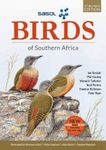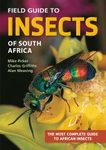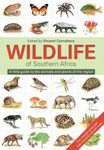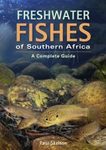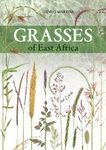Field / Identification Guide
By: Braam van Wyk(Author), Piet van Wyk(Author)
732 pages, colour photos, colour distribution maps
![Field Guide to Trees of Southern Africa Field Guide to Trees of Southern Africa]()
Click to have a closer look
About this book
Customer reviews
Related titles
About this book
This authoritative southern African tree guide is written and photographed by leading tree experts. Newly updated and expanded, it covers some 900 species, as well as subspecies and variations.Arranged in groups based on easy-to-observe leaf and stem characters, species are concisely described and illustrated with full-color photographs, and distribution maps showing their range. Supplementary features include useful notes on tree identification and an illustrated glossary.It is designed with the non-specialist in mind: trees are arranged in color-coded groups based on easy-to-observe leaf and stem characters. Each species account is illustrated with at least one full-color photograph of the plant's most readily identifiable part or parts, as well as an image of the full tree, and a distribution map shows its range. The concise text also touches on the practical uses of plants; supplementary features include useful notes on tree identification and an extensive illustrated glossary.Authoritative, classic guide written by leading experts includes comprehensive photography for all species, showing both close-up details and full trees and carefully designed keys to enable accurate identification.
Customer Reviews (1)
-
Outstanding Field Guide
By
Gehan de Silva Wijeyeratne
3 Jun 2018
Written for Paperback
Very few field guides to plants I have received have created such a strong first impression as this book did. There are multiple factors at play here, all of which have created a useful book that is clean and simple in design and reassuring to those new to the complicated process of identifying plants. The first thing that strikes you is the consistently amazing photographs which have a studio quality to them. With many photographic field guides to plants, the images are variable in quality. This is partly because the authors are not photographers or because field conditions do not lend themselves well to taking great images: something I am only too familiar with as I have been photographing plants for both a wildflower book and another on trees. The images in this book are luminescent. The close-ups of leaves and fruits are sharp and clear, often photographed against a black background. The images are of fresh specimens and help the reader to visualise what the plants look like in real life. Although I did not see any details provided on the photography, I assume that the result has been achieved by photographing a cutting of the leaves and fruits held in front of a black background. The black backgrounds do not look like an artefact from the use of ring flash in close-up photography. The lack of a distracting and confusing blur of leaves and plant matter in the background works surprisingly well to heighten the details of the fruits and leaves that have been photographed. Some readers may find it looks too clinical, but I personally think it makes this book stand out for the quality and clarity of the photography. Some of the images are the same as those used in the first edition published in 1997 but the photographs have been reproduced well and do not in any way appear to be lesser in quality to newer images.
The overall design of the book and the plates is similar between the first and the second editions. However, two changes are apparent. Firstly, on the photographic plates, there is a subtle change in the numbering. The photographs no longer have a white triangle on the left-hand corner onto which a number is typed in. This makes the plates look smarter and more contemporary. Overall the plates look sharper. The design of the facing page with text and a distribution map is unchanged. The other key change is the size of the book. The second edition is a hefty 732 pages compared to 536 pages in the first edition.
One of the design features I really liked was the key being depicted as a flowchart. The first edition also had this, but it looked more like a molecular phylogenetic diagram consisting of simple lines. In the second edition, the design is more pleasing although containing the same information and breaking the species into 43 groups based on leaf characteristics. Both editions contain the same number of groups although the later edition covers more species. The flowchart-based format for illustrating identification keys makes it so simple to follow rather than the traditional text-based identification keys. The user-friendly design extends into the end matter where images are used as a photographic glossary to illustrate features such as stipules and domatia.
The grouping based on leaf characteristics does mean that species from different plant families and orders are mixed into the same group and offers no insight into the evolutionary relationships. Plant guides can never offer both; having to choose between a taxonomic approach (e.g. based on molecular phylogenetics) or an artificial grouping based on characters such as leaves to help people identify a plant. Given that the aim is to help non-botanists identify the trees of Southern Africa, this approach is probably appropriate. As a result of arranging the trees into groups with shared external characteristics, the brief accounts of the different families to which they belong, are provided in the front section of the book.
The text is necessarily concise with over a 1,000 of the 2,100 species found in the region covered in its 732 pages. The text hits the mark with a minimal use of botanical terms and being identification oriented with key diagnostic features in bold face. It also in some cases highlights differences with similar species. In this respect it is unchanged in style from the first edition which I suspect may have been a pioneering photographic field guide in distilling the essence of identification with a focus on diagnostic features rather than repeating a ream of features leaving the reader to figure out how to tell one species apart from another.
My motivation for buying this book was twofold. Firstly, in anticipation of a forthcoming trip to Zambia. Although Southern Africa is defined as the area south of the River Zambezi, this book seemed like it would be a good proxy for a field guide to the trees I am likely to see in Zambia. Secondly, I am working on a compact photographic guide to the trees of Sri Lanka. Reading botanical books from other parts of the world is a part of the background research as well as a way of scouting around for good techniques to make a book, reader-friendly. I would recommend that anyone working on a photographic guide to plants examines this book for its elements of good design and clarity of exposition.
The front matter of the book has a brief introduction which includes a map showing the biomes and vegetation types in Southern Africa. Another map shows the regions and centres of plant diversity and endemism. Southern Africa has several centres of plant endemism. This is followed by a section on identifying trees and sections on how to use the book and a guide to the species accounts. The key to the 43 groups used in the book is followed by the family descriptions. Pages 18 to 33 cover the family descriptions and the sections seem brief. However, an astonishing 110 plant families are covered; around a quarter of the 416 plant families presently recognised in the work of the Angiosperm Phylogeny Group 4 (APG4). The end section is quite lengthy, running from pages 616-732. It begins with a photographic index of full trees and runs up to page 702, with the trees in the same order of the 43 groups. Trees in isolation are hard to photograph. Isolated trees are either those that have managed to establish themselves somewhere inhospitable or those that have been left alone as shade trees or to provide fodder for livestock when people have made clearings. The full trees in the appendix are cross-referenced in the main text. The book is completed with a glossary of terms, figures, a bibliography and a list of contact addresses.
This is an outstanding field guide. I cannot imagine anyone with an interest in plants, living or regularly visiting Southern Africa not wanting to have this book.
5 of 5 found this helpful
-
Was this helpful to you? Yes No
Field / Identification Guide
By: Braam van Wyk(Author), Piet van Wyk(Author)
732 pages, colour photos, colour distribution maps



























